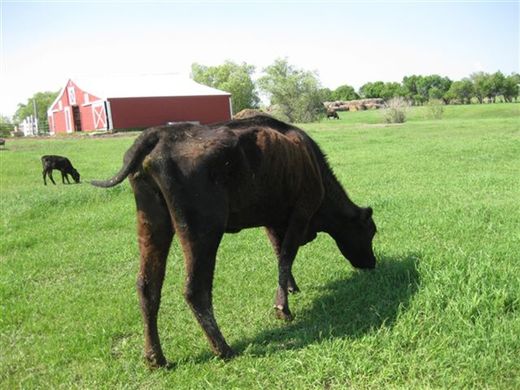
© Jacki SchilkeThis cow on Jacki Schilke's ranch in northeast North Dakota lost most of its tail, one of many ailments that afflicted her cattle after hydrofracturing, or fracking, began in the nearby Bakken Shale.
In the midst of the domestic energy boom, livestock on farms near oil- and gas-drilling operations nationwide have been quietly falling sick and dying. While scientists have yet to isolate cause and effect, many suspect chemicals used in drilling and hydrofracking (or "fracking") operations are poisoning animals through the air, water or soil.
Earlier this year, Michelle Bamberger, an Ithaca, N.Y., veterinarian, and Robert Oswald, a professor of molecular medicine at Cornell's College of Veterinary Medicine, published the first and only
peer-reviewed report to suggest a link between fracking and illness in food animals.
The authors compiled 24 case studies of farmers in six shale-gas states whose livestock experienced neurological, reproductive and acute gastrointestinal problems after being exposed - either accidentally or incidentally - to fracking chemicals in the water or air. The article, published in
New Solutions: A Journal of Environmental and Occupational Health, describes how scores of animals died over the course of several years. Fracking industry proponents challenged the study, since the authors neither identified the farmers nor ran controlled experiments to determine how specific fracking compounds might affect livestock.
The death toll is insignificant when measured against the nation's livestock population (some 97 million beef cattle go to market each year), but environmental advocates believe these animals constitute an early warning.

Comment: For more information about an easy way to combat stress, check out the Eiriu Eolas Stress Control, Healing and Rejuvenation Program here.